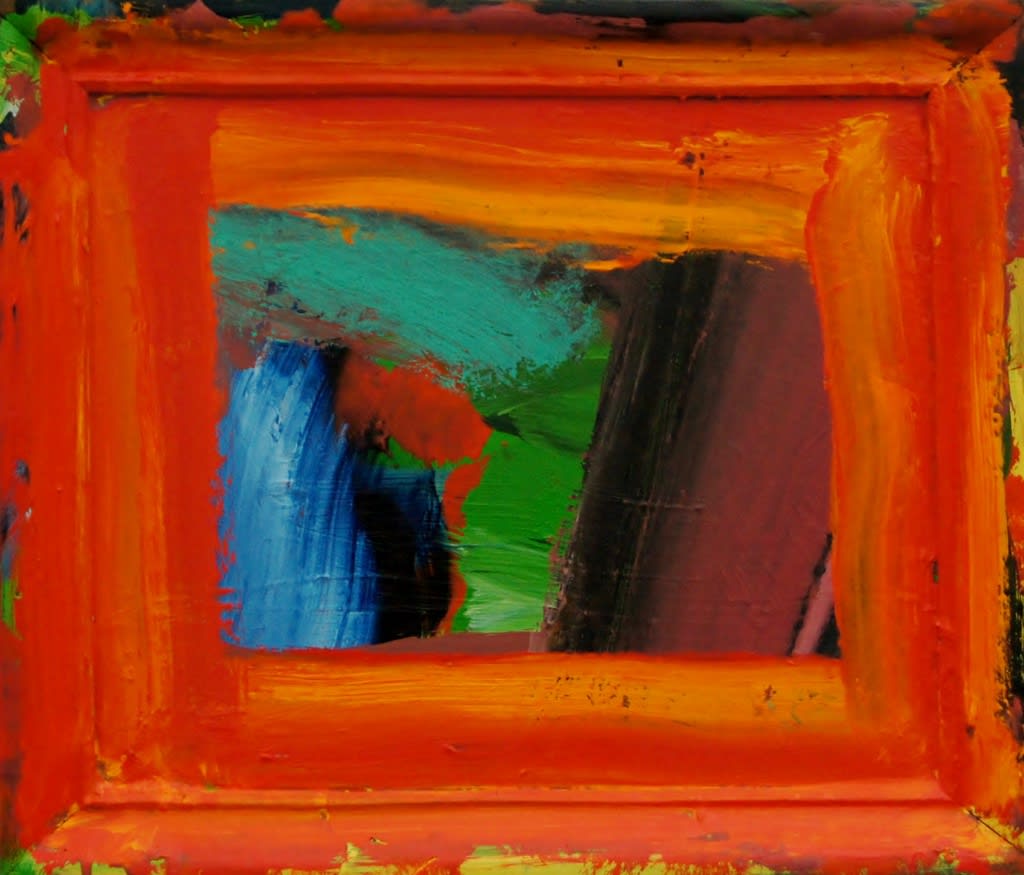Birth name: Gordon Howard Eliot Hodgkin
Born: 6 August 1932 London, United Kingdom - Died 9 March 2017
Nationality: British
Education: Camberwell Art School, Bath Academy of Art
Awards: Turner Prize, 1985
Represented by Gagosian Gallery
Howard Hodgkin was a cousin of the English still life painter Eliot Hodgkin (1905–87). He was educated at Bryanston School in Dorset. He then studied at the Camberwell Art School and later at the Bath Academy of Art in Corsham, where Edward Piper studied drawing under him.
Hodgkin's first solo show was in London in 1962. His early paintings tend to be made up of hard-edged curved forms in a limited number of colours. Around the beginning of the 1970s, his style became more spontaneous, with vaguely recognisable shapes presented in bright colours and bold forms. His works may then be called "semi-abstract", and are often compared to the paintings of Henri Matisse. In 1984, Hodgkin represented Britain at the Venice Biennale, in 1985 he won the Turner Prize, and in 1992 he was knighted. In 1995, Hodgkin printed the Venetian Views series, which depict the same view of Venice at four different times of day. Venice, Afternoon - one of the four prints - uses sixteen sheets, or fragments, in a hugely complex printing process which creates a colourful, painterly effect. This piece was given to the Yale Centre of British Art in June 2006 by the Israel family to complement their already-impressive collection of Hodgkins. In 2003 he was appointed by Queen Elizabeth II as a Companion of Honour. A major exhibition of his work was mounted at Tate Britain, London, in 2006. Also in 2006, The Independent declared him one of the 100 most influential gay people in Britain, as his work helps many people express their emotions to others. In September 2010 Hodgkin and five other British artists including John Hoyland, John Walker, Ian Stephenson, Patrick Caulfield and R.B. Kitaj were included in an exhibition entitled The Independent Eye: Contemporary British Art From the Collection of Samuel and Gabrielle Lurie, at the Yale Center for British Art Hodgkin's paintings often seek to convey memories of encounters with friends and frequently carry titles alluding to specific places and events such as Dinner at West Hill (1966) and Goodbye to the Bay of Naples (1980–82). Hodgkin himself said that he paints "representational pictures of emotional situations," a statement that fixes him firmly as an advocate of the expressionist movement. Hodgkin's appeal to representationalism prevents his categorization as an abstract expressionist - although some artists within that movement do execute representational paintings that are consumed into the expressionistic vortex of their particular psychodrama.
As a formidable expressionist, Hodgkin occupies a lonely space somewhere between the incandescent impressions of Turner; the powerful emotional explosiveness of Van Gogh and the colder abstractions of Pollock, De Kooning and the late canvases of Kline. Despite their apparent spontaneity and usually small scale, many of Hodgkin's paintings took years to complete, with the artist returning to a work after a wait and then changing it or adding to it. He often painted over the frames of his pictures, emphasising the idea of the painting as an object. Several of his works are on wooden items, such as bread-boards or the tops of old tables, rather than canvas. A number of his works not shown in frames are surrounded by rectangles of simple colour. His prints are hand-painted etchings and he has worked with the same master printer (Jack Shirreff at 107 Workshop) and print publisher (Alan Cristea Gallery) for the last 25 years.
